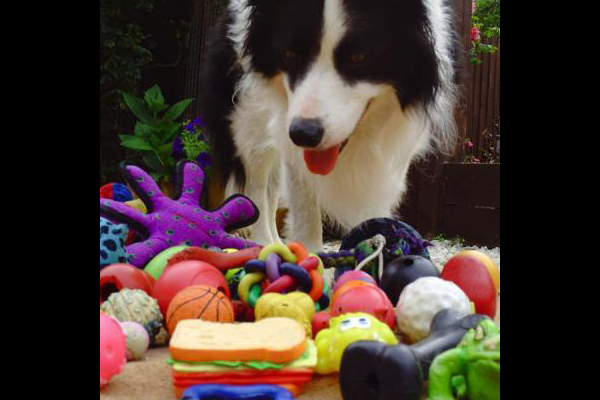Dogs learning to associate words with objects form these associations in different ways than humans do, according to research published November 21 in the open access journal PLOS ONE by Emile van der Zee and colleagues from the University of Lincoln, United Kingdom
.
Previous studies have shown that humans between the ages of two to three typically learn to associate words with the shapes of objects, rather than their size or texture. For example, toddlers who learn what a ‘ball’ is and are then presented other objects with similar shapes, sizes or textures will identify a similarly-shaped object as ‘ball’, rather than one of the same size or texture.
Earlier research with dogs has shown that they can learn to associate words with categories of objects (such as ‘toy’), but whether their learning process was the same as that of humans was unknown.
In this new study, the scientists presented Gable, a five year old Border Collie, with similar choices to see if this ‘shape bias’ exists in dogs. They found that after a brief training period, Gable learned to associate the name of an object with its size, identifying other objects of similar size by the same name. After a longer period of exposure to both a name and an object, the dog learned to associate a word to other objects of similar textures, but not to objects of similar shape.
According to the authors, these results suggest that dogs (or at least Gable) process and associate words with objects in qualitatively different ways than humans do. They add that this may be due to differences in how evolutionary history has shaped human and dog senses of perceiving shape, texture or size.
The bottom line: Though your dog understands the command “Fetch the ball,” but he may think of the object in a very different way than you do when he hears it. As the authors explain, “Where shape matters for us, size or texture matters more for your dog. This study shows for the first time that there is a qualitative difference in word comprehension in the dog compared to word comprehension in humans.”
Source here











